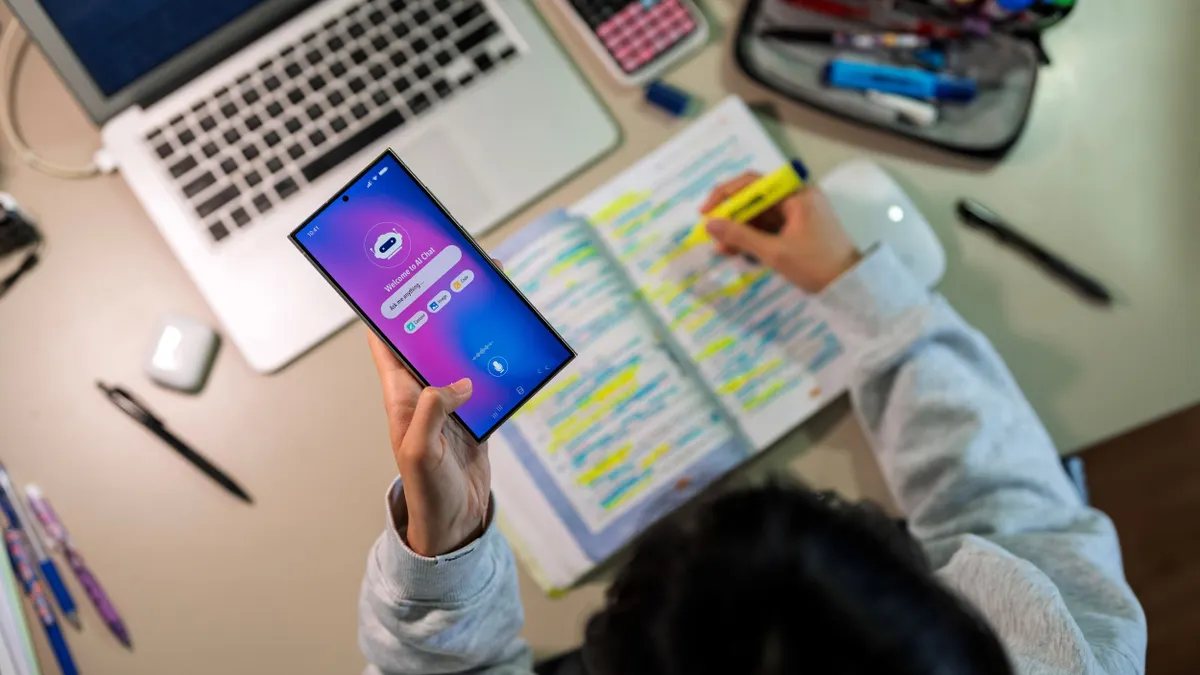Almost a year ago in October, Apple announced its most successful quarter in education sales. The company made more than $1 billion and iPads made up 94% of the tablet market share. The times, however, may be changing.
Last month, the Los Angeles Unified School District announced it would be scrapping its iPad project. The decision to cancel its contract with the tech giant came with news that potential conflicts of interest may have informed the $1 billion deal. Beyond questionable deals, there was plenty of concern over price, as well as the implementation of the iPads. For example, the rollout was reportedly messy and lacked structure, students deleted security profiles, and the devices lacked necessary accessories, like keyboards.
Does this mean Apple's time as king of the ed tech hill is over? What other options Are available? Let's take a look at some of the contenders that may now have a greater opportunity to take a bite of Apple's classroom foothold.
1. Chromebooks
The Google-powered Chromebook laptops are increasingly popular with schools. At the beginning of the summer, the company announced it had sold a million of the devices, and by the end of summer, market research firm Gartner predicted that 5.2 million will be shipped by the end of the year — a 79% increase in sales from last year.
So why are they so successful? Chromebook has been lauded by TechRepublic for its simple and cheap deployment and easy management. When the Chromebook was first presented in September 2013, there were only 4 Chromebook options. Today, districts can choose between 20. That leaves a lot of space for administrators to tailor their purchasing needs. There's also the price factor: While an older iPad may cost $400, a Chromebook typically costs about $200.
Chromebook is also consistently trying to improve. In July, TechRepublic spoke with Ken Lin, an engineering manager for the Chrome education and business team. Lin shared some of the ways his team is working to improve the devices. For one, they want Chromebooks to be time savers and are looking for ways the laptops can be used to grade homework and tests. Second, they want the devices to be viewed as more of a connector — in other words, a way to link people and resources.
2. Amplify tablets
Amplify is perhaps best known as the ed-centric tablet maker headed by former New York City education chancellor and current Amplify CEO Joel Klein and owned by Rupert Murdoch’s News Corp.
So where does it stand in the market? Well, in order to woo potential customers, Amplify recently announced changes to its payment plan. Now the tablet will cost $359 per user during the first year and then only $60 per user for the following two years. That's quite a score for administrators looking for a long-term solution. While buying technology can be difficult since something faster and sleeker will always be on its way, the idea of planning ahead and sticking to a product can have its upsides, as seen with this deal.
But what does Amplify bring beyond its price point? How about an entire inventory of Amplify specific educational apps. Along with the lower price point, the company announced Amplify Market, which houses various approved K-12 apps, a Quiz Builder app, an Assignments app, a Playlist Builder lesson plan app, and a Support app. Amplify also suggests purchasing a $30 wired keyboard from Belkin, which is compatible with the Amplify tablet and would allow the device to be used later in the year during online standardized testing.
3. The 3E tablet
This recently revealed tablet is a joint collaboration between Panasonic, Intel and Microsoft. Unveiled at the 2014 International Society for Technology in Education (ISTE) Conference, the 3E has a 10" touchscreen and students can either use it as a tablet or a computer if they hook up its detachable keyboard.
3E stands for "Engage, Empower and Enable," which is exactly what the tablet aims to do. KNO's education software comes preloaded on the device, there is a stylus for note-taking, a magnifying lens that turns the camera into a microscope, and a temperature probe for science experiments. As if it couldn't get any more versatile, the 3E is IP51 standard compliant, which means it is resistant to spills and dust and sturdy enough to handle three-foot tumbles.
Of course, there's a downside: It's one of the pricer options, currently starting at $499. Perhaps this isn't an ideal device for 1:1 implementation, but it would definitely be useful for a teacher to share with her students.
4. KUNO
This $375 Android tablet is made by Curriculum Loft, a small company based out of Indiana, but don't think overlook it just because you've never heard of its maker. In September 2012, ZDNet said the KUNO Tablet was poised to be a major competitor for Apple. Additionally, KUNO users have access to not one, but TWO marketplaces: Google Play, and Curriculum Loft's own app market.
KUNO doesn't get too carried away with bells and whistles, which can be a good thing given the target audience: easily distracted students.
5. Microsoft Surface 2
Microsoft's 10" tablet comes preloaded with the Office Suite, which means PowerPoint creation is automatically at students' fingertips — a definite plus if you want to give students the opportunity to start making their own slide shows and creating mini-lessons. Get the optional keyboard ($129) and you can also have students take notes or complete writing assignemnts more easily. The 10-hour battery life isn't too shabby either. It is, however, on the pricier side, ringing in at $449 — still cheap compared to the Surface 3, which costs $799.
6. Amazon Kindle
Amazon is definitely making strides to appeal to the education sector. In June, it announced a new free math app for its users, and in fall 2012, Kindle launched Whispercast, which allows schools to manage a "fleet of Kindles" and even hand out books, papers, and apps electronically. Kindle Fire HDX Tablets start at $229, making them one of the cheaper tablet options.
7. Barnes & Noble's NOOK
Possibly the cheapest of the tablet options, the NOOK GlowLight is $119 and the Samsung Galaxy Tab 4 NOOK is $179. This option is probably most useful in an English Language Arts class, where a plethora of books can instantly be made available. Instead of purchasing various class sets of a book, a teacher can download copies to the tablet. Best of all, the NOOK comes with $200 worth of content already loaded, and while not all of it may be appropriate for the classroom, it's a start.
As NOOK inches more into the education arena, it has made friends. In December 2012, NOOK announced a partnership with curriculum crafter Pearson, which invested $89.5 million in NOOK Media.
Would you like to see more education news like this in your inbox on a daily basis? Subscribe to our Education Dive email newsletter! You may also want to read Education Dive's look at 4 ways to build civic engagement in the classroom and beyond.






 Dive Awards
Dive Awards














